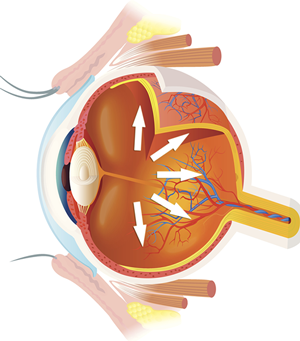Service
Glaucoma Disease
- Open-angle glaucoma :- This is the most common form. The drainage angle where the iris meets the cornea is open, but the trabecular meshwork (the drainage system within the eye) becomes less efficient over time, leading to an increase in intraocular pressure
- Angle-closure glaucoma :- In this type, the drainage angle between the iris and cornea is closed or blocked, causing a sudden increase in intraocular pressure. This is considered a medical emergency
- Normal-Tension Glaucoma (NTG) :- In Normal Tension Glaucoma, optic nerve damage and vision loss occur despite normal intraocular pressure. The exact cause of this type is not fully understood, but factors such as reduced blood flow to the optic nerve may play a major role.

- Secondary Glaucoma :- Secondary glaucoma can be caused by eye injuries, inflammation, tumors, or other conditions that affect fluid drainage from the eye.
- Pigmentary Glaucoma :- Pigmentary Glaucoma occurs when pigment granules from the iris build up in the drainage channels of the eye, which leads to increased intraocular pressure and optic nerve damage.
- Exfoliative Glaucoma :- This type is associated with the shedding of material from the outer layer of the lens. The material can block the drainage angle, leading to increased intraocular pressure.
- Congenital Glaucoma :- This rare form of glaucoma is present at birth and is usually caused by an abnormal development of the eye's drainage system. It requires prompt medical attention.
Glaucoma Treatment
- Laser Peripheral Iridotomy (LPI): Used for angle-closure glaucoma, this procedure creates a small hole in the iris to improve drainage.
- Laser Trabeculoplasty: This procedure is often used for open-angle glaucoma and involves applying laser energy to the trabecular meshwork to enhance drainage.
- Trabeculectomy: This surgical procedure creates a new drainage channel for the aqueous humor to reduce intraocular pressure.
- Minimally Invasive Glaucoma Surgery (MIGS): New surgical techniques that involve less tissue disruption than traditional surgeries.
The treatment of glaucoma aims to lower intraocular pressure (IOP) to prevent or slow down further damage to the optic nerve. The specific treatment plan depends on the type and severity of glaucoma. Here are some common glaucoma treatments:
Prescription Eye Drops: Eye drops increase the outflow of aqueous humor (fluid) from the eye, and reduce intraocular pressure or decrease the production of aqueous humor.
Oral Medications: In some cases when eye drops are not effective oral medications may be prescribed, particularly for certain types of glaucoma.
Laser Therapy
Surgery
Drainage Implants: Sometimes a drainage tube shunt may be surgically implanted to help drain excess fluid from the eye.
Regular Monitoring: Regardless of the treatment method, regular monitoring and follow-up appointments with glaucoma eye specialists are essential to assess the effectiveness of the treatment and make adjustments as needed.
